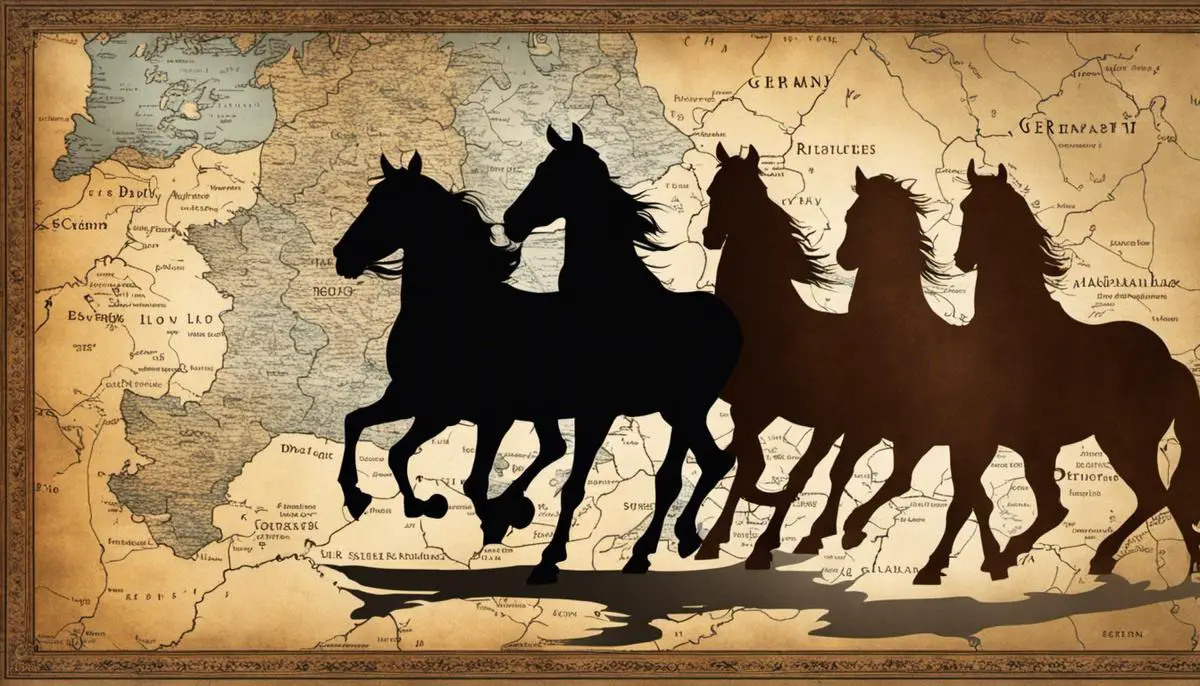Horse breeding in Germany harbors a rich history, a diversified portfolio of familial breeds, and an industrious economy fortified within it. Plunging back to its roots, the practice unveils a captivating journey of evolution burgeoning with iconic milestones that have shaped the country’s blacksmithing specialty. This is further complemented by a treasury of endemic breeds such as the Hanoverian, Holstein, Oldenburg, and more – each with their distinct characteristics and strengths. As we delve into the underpinnings of horse breeding, an understanding of the biological, genetic principles, best practices, and ethical considerations specific to the German horse breeding industry is crucial. Indexing the role of Government, the narrative about regulations, policies, and support also forms a critical part of this exploration. Furthermore, discussing the economic bearings, market value, exports, and job creation resulting from this industry casts light on its national significance. Lastly, gaining insight into the modern challenges – such as climate change and genetic diversity, supplemented by the influence of technological and scientific developments provides a holistic view on the future of horse breeding in Germany.
Table of Contents (Horspedia)
History of Horse Breeding in Germany
Origins of Horse Breeding in Germany
Horse breeding in Germany can be traced back to the Middle Ages, especially around the 9th century when the conquering Franks introduced horse breeding in the region. The Franks, largely equestrians themselves, recognized the importance of good horses for military and agricultural purposes. Over the centuries, horse breeding became an integral part of German agricultural and military operations, with multiple breeds being developed to cater to different needs.
Development of Indigenous Breeds
Germany has a rich history of developing indigenous horse breeds which are now renowned worldwide. Breeds like Holsteiner, Hanoverian, and Trakehner originated in Germany. For instance, Holsteiner horses, known for their strength and endurance, were bred in the northernmost region of Germany, Schleswig-Holstein, as early as the 13th century. The Hanoverians were developed as carriage horses in the early 18th century, while the Trakehner breed, known for their versatility and athleticism, evolved in the East Prussian region during the 16th century.
Key Milestones in Germany’s Horse Breeding History
The creation of studbook registries was a pivotal event in horse breeding in Germany. The first German studbook was created for Holsteiner horses in 1867, followed by Hanoverians in 1888. These studbooks contained the records of pedigrees, effectively improving the breeding standards.
Another significant milestone was in the 20th century when horse breeding in Germany and the rest of the world shifted from agricultural and military purposes towards sport and recreational use. This transformation saw German breeds, especially warmbloods such as Hanoverians, Holsteiners, and Oldenburgs, gain international recognition for excelling in sport disciplines including show jumping, dressage, and eventing.
State-Controlled Breeding and Impact of World Wars
In the late 19th and early 20th centuries, horse breeding in Germany became state-controlled. The state-funded and managed breeding programs were responsible for the development and maintenance of high-quality horses breeds. However, the devastation of the World Wars saw a massive decline in the horse population, especially the tactically-important warmbloods, threatening the German horse industry.
Post-War Rebuilding and Modern Horse Breeding
After World War II, German breeders had the formidable task of rebuilding their horse breeding industry, requiring selective stock improvement and the import of stallions from abroad. The resulting post-war breeds were of inarguably high quality, giving rise to some of the best sport horses. In the current era, Germany is renowned for its horse breeding industry, exporting top-notch breeds worldwide, contributing to equestrian sports, and playing an important role in the country’s agricultural and tourism sectors.
Contemporary Breeding Strategies and Obstacles
Today’s German breeding practitioners apply sophisticated tactics in horse breeding, including techniques like artificial insemination, embryo transfer, and gene testing. But the horse breeding industry in Germany must contend with increased challenges such as genetic diversity reduction and risks tied to intensified breeding. To tackle these pressing issues, breeding associations are consistently investigating novel breeding approaches and technologies, maintaining the value and enhancing the quality of Germany’s horse breeds.

German Horse Breeds
Famous German Horse Breeds: Their Breeding Lineage and Importance
Internationally, Germany is known for its impressive horse breeding sector. The roots of this vital industry can be traced back to medieval times when horse breeding became an organized practice. The main objective of German horse breeding historically and today has been to yield high-performance horses that can be utilized for various tasks, ranging from equestrian sports and agricultural work, to military usage.
Recognized German Horse Breeds: Hanoverian, Holstein, and Oldenburg
Germany is home to several popular and internationally renowned horse breeds. Among the most prominent German breeds are the Hanoverian, Holstein, and Oldenburg.
Hanoverian
The Hanoverian breed is sought-after due to its impressive athleticism, refinement, and intelligence. Originally a carriage and military horse, it has since been bred for dressage, eventing, and show jumping. This breed’s distinctive features include a well-set neck, full flanks, and strong legs.
Holstein
Holstein is another horse breed native to Germany, originating in Schleswig-Holstein. Known for their power, scope, and athletic ability, Holsteiners often excel in show jumping competitions. They are recognized by their muscular frame, straight top line, and graceful gait.
Oldenburg
Oldenburg is a Germany-based horse breed praised for its versatility and presence in various equestrian activities, including dressage, show jumping, and eventing. They are well-built, featuring a large frame capable of high motion and speed, smooth coat, and a beautifully arched neck.
Characteristics and Breed Standards
The German horse breeding industry is characterized by its dedication to strict breed standards. These standards entail rigorous tests for young stallions and mares, not only to preserve top-quality breed lines but also to optimize the performance and health of newly bred horses.
Strengths of German Horse Breeds
German horse breeds are notably versatile, excelling in numerous areas such as dressage, jumping, eventing, and endurance. They are also known for their robust health, longevity, and good temperaments, making them highly sought after worldwide.
Uniqueness: Combination of Genetics and Breeding Practices
The uniqueness of German horse breeds is attributable not only to their specific traits but also to Germany’s distinct and meticulous breeding practices. These include strict herd book selection, comprehensive performance tests, and an unmistakable commitment to maintaining the integrity of each breed.
Conclusion: The Influence of Germany on Global Horse Breeding
Germany has consistently marked a substantial impact on the worldwide horse breeding industry. Notable German breeds including the Hanoverian, Holstein, and Oldenburg are bred and exported around the globe. Furthermore, the country’s robust and praiseworthy breeding processes have frequently defined industry standards.
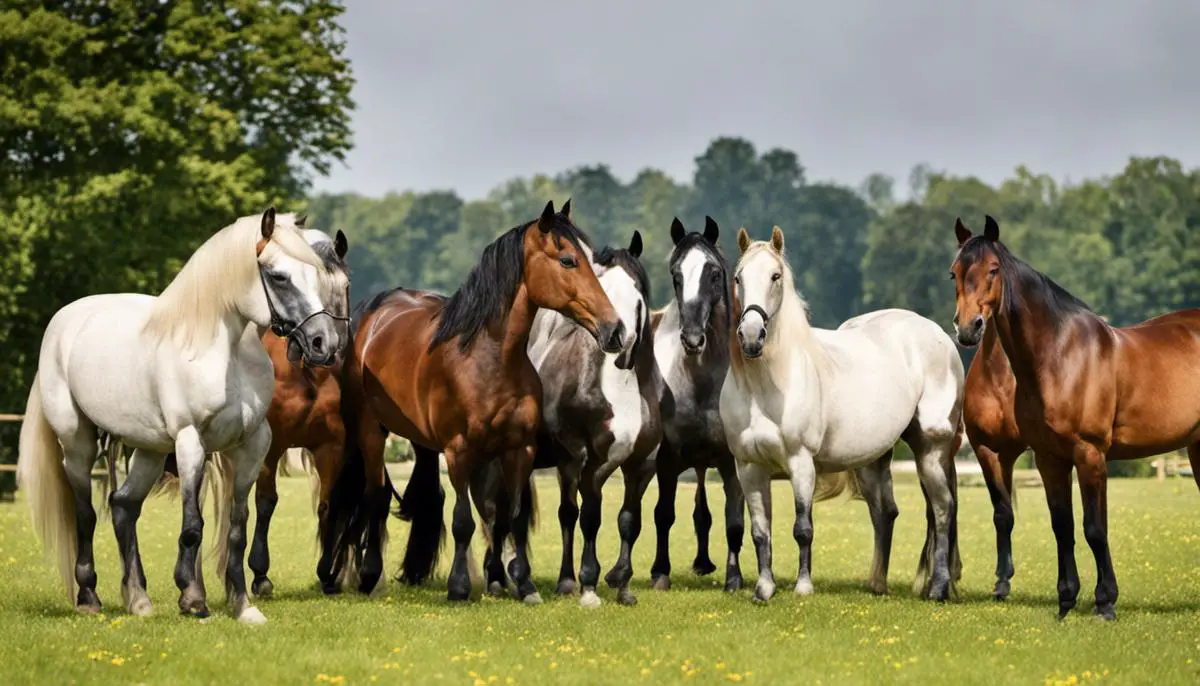
Practices and Principles of Horse Breeding
The Role of Biological and Genetic Principles in German Horse Breeding
In Germany, as is the case worldwide, horse breeding is fundamentally rooted in biological and genetic principles. Such principles inform the blueprint for traits like a horse’s coat color, height, and overall structure. German breeding programs apply these principles in a calculated way, selecting pairing stallions and mares strategically to enhance desirable traits and potentially minimize hereditary diseases. This process relies heavily on a comprehensive understanding of how these traits are inherited from one generation to the next.
Equally pivotal in German horse breeding is the need for genetic diversity. To facilitate this, pedigree information is often methodically recorded in studbooks to maintain a varied gene pool. Adhering to this practice safeguards against the dangers associated with inbreeding, which could include a heightened propensity for diseases and a decrease in vitality or productivity.
German Horse Breeding Practices
The German horse breeding industry is rooted in a tradition of careful selection and meticulous record-keeping. Germany is known internationally for its ‘warmblood’ breeds, such as the Hanoverian, Holsteiner, and Oldenburg, renowned for their athleticism and versatility as sport horses.
Best practices in Germany variously focus on maintaining the health of the mare and foal, producing top-quality athletes, and preserving breed standards. These include an array of factors critical for breeding, including proper nutrition, regular health checks, secure and clean facilities, good veterinary care, and ethical handling of the animals.
Unique to Germany is the practice of ‘licensing’ stallions. This involves a rigorous testing process to ensure only the best quality stallions contribute to the gene pool. The selection is based on multiple factors, including the horse’s pedigree, conformation, gaits, character, and athletic ability.
Ethical Considerations
Horse breeding in Germany does not only revolve around the physical aspects but also places a strong emphasis on ethical considerations. The German Equestrian Federation has laid down guidelines for horse breeding, focusing on ensuring the welfare of the animal.
The guidelines discourage unnecessary medical treatments to prepare horses for auction or competition, to prevent harm to the animal’s long-term health. Breeding of horses with known hereditary diseases is also strongly advised against. Moreover, Germany has stringent animal welfare laws, with harsh penalties for violations, further safeguarding the ethical treatment of horses.
The aim is to breed healthy horses suited to their purpose, whether it be for leisure riding, competition, or work, maintaining a balance between breeding for performance and ensuring the well-being of the animals.
Evolution and Innovation in Horse Breeding in Germany
Revered for its adaptability and staying power, the horse breeding industry in Germany has consistently embraced change, particularly in the realm of scientific advancements. Breeders in this region are no longer relying solely on time-tested methods. Instead, they are turning to assisted reproductive techniques including, but not limited to, artificial insemination (AI) and embryo transfer, as well as the adoption of cutting-edge genomic techniques.
In the current age of promoting sustainability, Germany isn’t falling behind. Efforts taken in horse breeding strive to extend a horse’s athletic capabilities while simultaneously focusing on longevity and adaptability to varying environmental factors. This approach deftly balances sports demands, ethical breeding considerations, and environmental awareness.
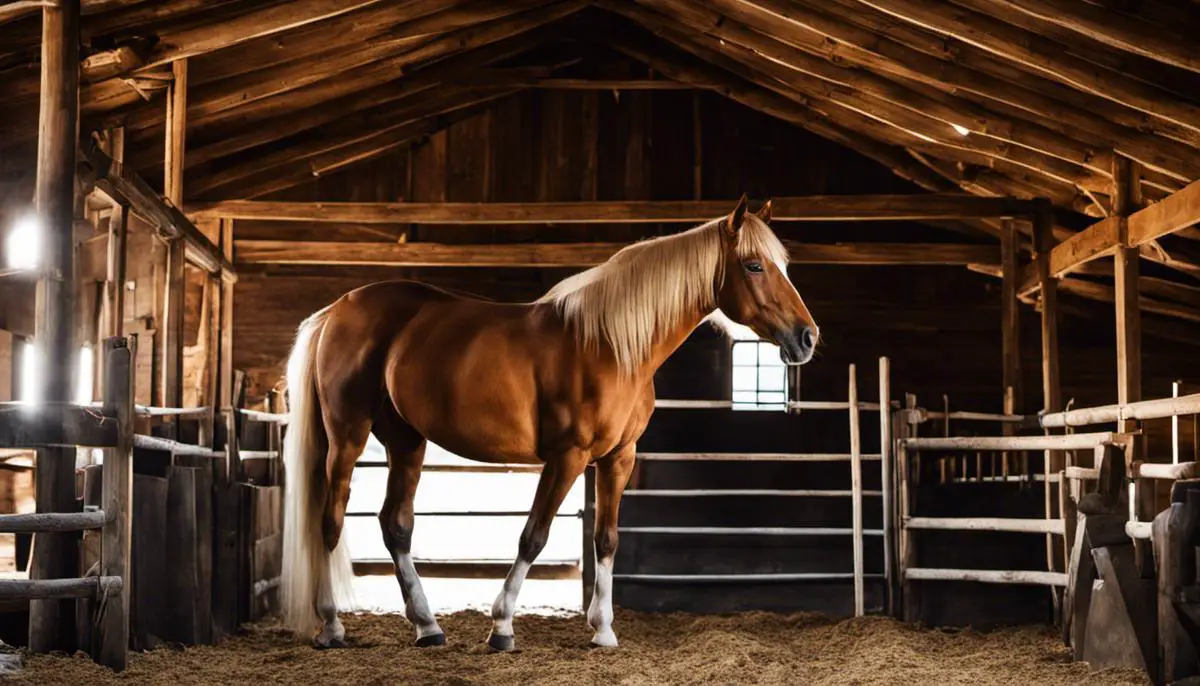
Role of Government and Regulations
The Influence of the German Government on Horse Breeding
The guiding hand of the German government significantly shapes the country’s horse breeding industry. Through the implementation of select policies and regulations, and by offering support to the industry, the government actively contributes to the well-being of horses, advocates for ethical breeding practices, and sustains the global reputation of horses bred in Germany.
Regulatory Oversight
The Bundesministerium für Ernährung und Landwirtschaft (BMEL), or Federal Ministry of Food and Agriculture, is primarily responsible for overseeing animal welfare and agriculture, which includes the horse breeding industry. The Animal Welfare Act (Tierschutzgesetz) sets forth guidelines for the humane treatment of animals, including equines, and stipulates requirements for breeding practices.
Additionally, the monitoring of horse breeding in Germany is shared by several authorized breeding associations, such as the Hannoveraner Verband and Holsteiner Verband, which operate under the umbrella of the German Equestrian Federation (Deutsche Reiterliche Vereinigung, FN). These associations ensure adherence to specific breed standards and adherence to ethical breeding practices.
Support and Promotion of Horse Breeding
The government provides financial support to equine breeding through funding programs aimed at the continuance and improvement of the pedigree and performance of German horse breeds. It also offers support for professional training and continuing education in the field of horse breeding and management.
State veterinary offices play a role in supporting breeders by providing medical checks and health certificates necessary for breeding activities, including semen and embryo shipping regulations, thereby ensuring the propagation of healthy animals.
Implementation of Regulations
The German government, in cooperation with various breeding associations, has implemented effective mechanisms for monitoring the application of breeding regulations. Breeders must maintain records of all breeding stock, treatment of animals, and breeding activities, which are subject to regular inspection.
In addition to these domestic regulations, German horse breeders are also required to comply with European regulations, particularly the Zootechnical Regulations, which sets standards for animal breeding across the European Union, promoting the free movement of breeding animals and their genetic material.
Government Policies and Their Impact on Horse Breeding
German horse breeds are highly regarded globally, a testament to the solid administration of German government bodies, as well as their effective collaboration with breeders and breeding associations. The German horse breeding industry’s international reputation stems from strict breeding standards and ethical, sustainable practices. This has led Germany to produce some of the highest quality horses, which excel in various disciplines, including dressage, show jumping, and eventing.
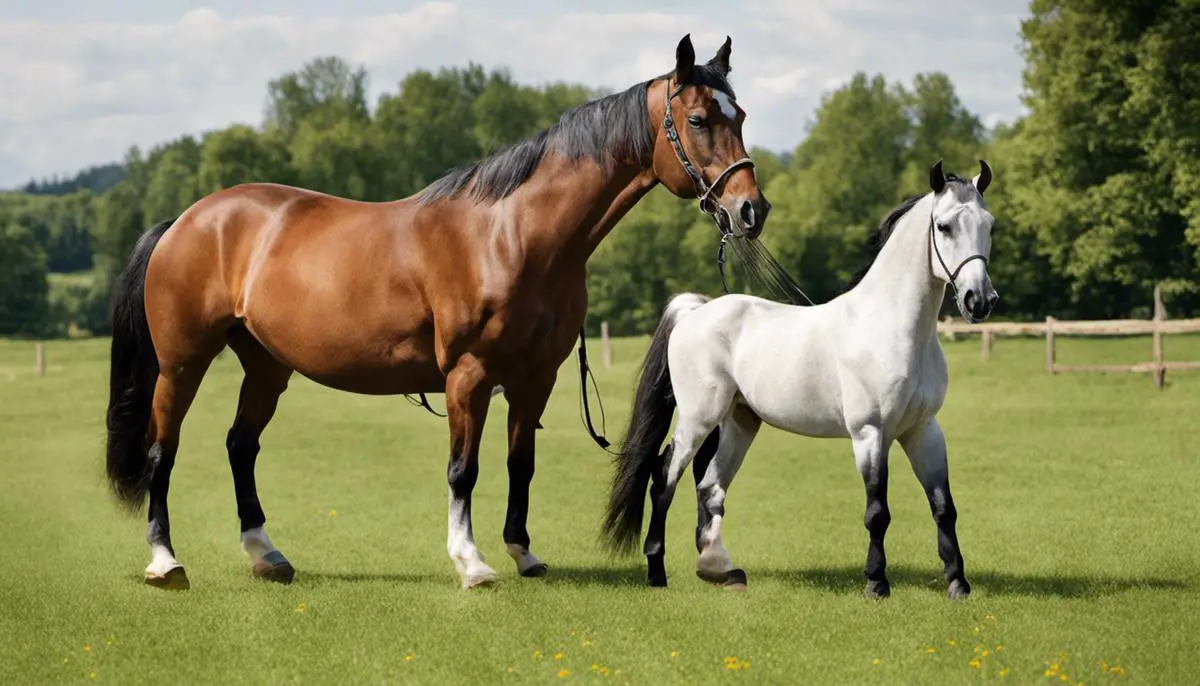
The Horse Breeding Industry and Economics
The Economic Role of Horse Breeding in Germany
In Germany, horse breeding is a valuable sector, forming a significant piece of the country’s economic infrastructure. The nation’s history and involvement in breeding top-tier, world-class horses, especially for disciplines like dressage, eventing, and show jumping, is well known. The horse breeding industry contributes billions of Euros to Germany’s economy, underscoring its importance in the country’s agricultural sector.
Exports and International Standing
Germany is one of the leading countries in horse exports, reinforcing its strong international standing in this trade. It exports thousands of horses annually to countries around the globe, with the United States, United Kingdom, and Netherlands being significant markets. The wide array of breed offerings, quality, and celebrated training methods make German-bred horses sought after worldwide, driving up their market value significantly.
Job Creation in the Industry
The horse breeding industry in Germany is a key employer, creating thousands of job opportunities. From breeding farms and stallion stations to veterinary practices and feed suppliers, the industry supports a diverse and substantial workforce. It enables both direct and indirect employment opportunities, spanning areas including horse care and management, training, transportation, and exportation.
Equine Tourism and Sport Economics
The industry also bolsters equine tourism and sport economics. Germany is famous for its equestrian sport culture, drawing visitors from around the world to participate in and spectate equestrian events. Big equestrian events like CHIO Aachen and the German Derby Hamburg not only add to the tourism revenue but also provide marketing opportunities for breeders and horse traders.
Government Support and Industry Innovation
The German government provides significant support to the horse breeding industry, recognizing its economic influence. Financial aids, incentives for breeders, and research funding are part of this support, aiming at maintaining breeding expertise, industry innovation, and sustainability. It collaborates with breeding associations and universities to advance research in equine genetics, health, and welfare, continually improving the breeding processes, helping to ensure the ongoing prosperity of the industry.
Understanding the Horse Breeding Narrative in Germany
Germany’s horse breeding industry, celebrated for its rich heritage and quality, plays a significant role in the country’s economy despite several challenges threatening its steady growth. The escalating costs of land and feed, coupled with diminishing rural populations, pose potential threats. However, these concerns are somewhat mitigated by government support and the industry’s steely commitment to uphold its high standards, which certainly pave the way for its continued prominence in the German economy.
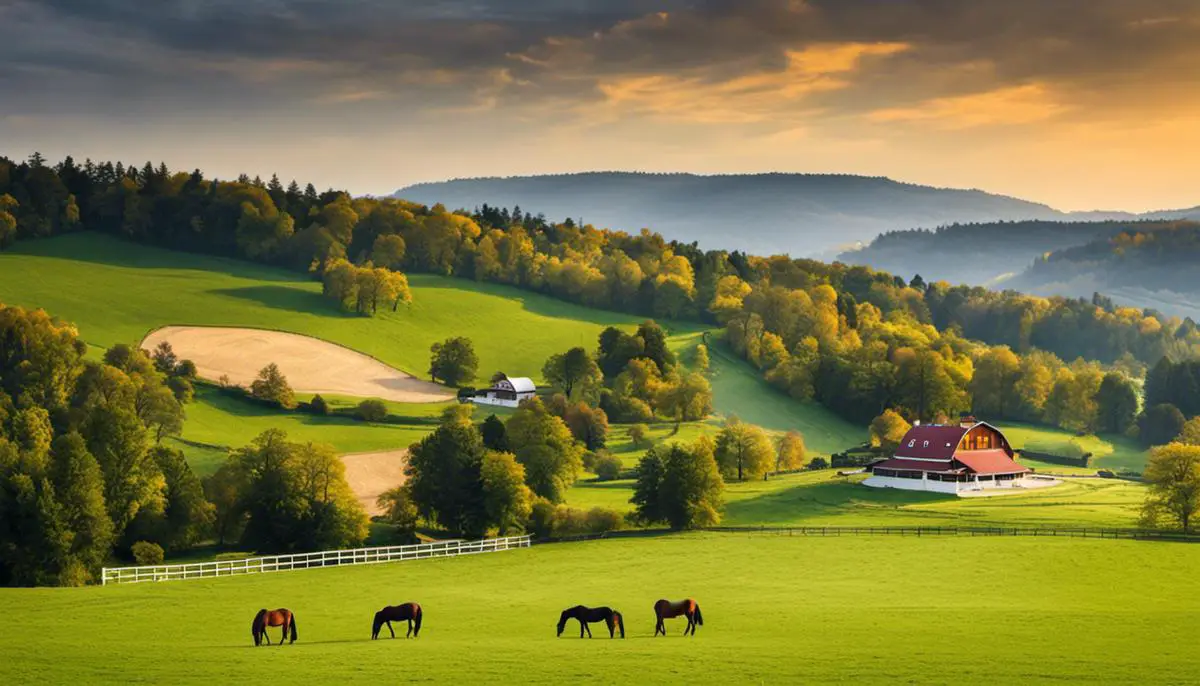
Challenges and Future of Horse Breeding in Germany
The road to success in Germany’s horse breeding industry is riddled with considerable challenges, namely climate change, dwindling genetic diversity, economic woes, and potentially restrictive policies on breeding.
Unpredictable climate changes are among the starkest threats to the industry. Changes in temperature and rainfall patterns cast ominous shadows over pasture quality, feed and water availability. In fact, such climate inconsistencies could disrupt the feed balance, severely affecting the health of stallions and broodmares, consequently impacting foal fertility and survival rates. These shifts also trigger an uptick in parasite activity, thereby magnifying the risk of disease.
Moreover, a concerning reduction in the genetic diversity of Germany’s horses lurks in the background. Market demands show a worrying preference for a select few breeds such as the Warmbloods and Thoroughbreds, leaving traditional and rare breeds teetering on the brink of extinction. The resultant decrease in genetic variability sadly confines the range of selectable traits, making entire breeds vulnerable to inherited diseases and weakens their adaptability to evolving environmental scenarios.
In addition, Germany’s horse breeding industry grapples with economic factors and policy-related issues. It must endure the substantial costs involved in feeding, veterinary care, housing, and training, while also navigating unpredictable market conditions. Demand for horses in sports and leisure is volatile and can substantially impact the financial viability of breeders’ investments.
Future of Horse Breeding in Germany: Technology and Advances in Science
Despite the challenges, the horse breeding industry in Germany is making significant strides leveraging technological and scientific advancements.
Genomics, the study of an organism’s complete set of genes, offers significant opportunities for the future of horse breeding. Genomic selection, which uses genetic markers to predict an individual’s breeding value, is increasingly being adopted in breeding programs. This tool allows breeders to make more accurate selection decisions and accelerates genetic progress. Moreover, genomics offers the potential to manage and conserve genetic diversity within breeds.
Another promising field is assisted reproductive technologies (ARTs), including artificial insemination and embryo transfer. Not only can these techniques increase the number and geographic spread of offspring from high-quality mares and stallions, but they also reduce the risk of injury from natural mating.
Furthermore, digital technologies are becoming central in horse breeding. Among others, digital tools help in registering, identifying, and tracking horses, monitoring their health and reproduction, and connecting breeders, owners, and sport enthusiasts. As technology advances, the application of machine learning or artificial intelligence could further optimize breeding decisions, for instance, by predicting desirable traits or potential health problems.
As technology and science continue to evolve, the horse breeding industry in Germany is likely to face a period of profound change. These innovations will require breeders to acquire new skills and knowledge, adapt their breeding strategies, and navigate the ethical implications raised by new technologies.
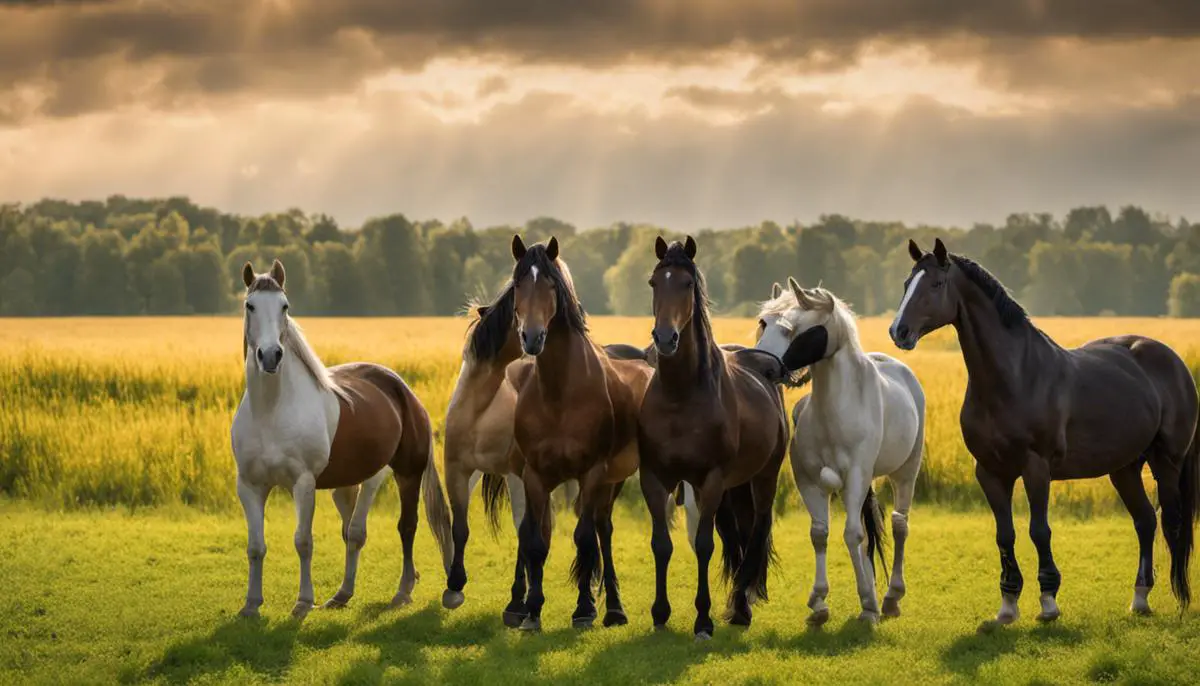
From the inception of its rich history to the crowning of world-renowned breeds, horse breeding in Germany offers a multilayered narration that continues to evolve today. An industry that integrates multifaceted principles of genetics and biology, upholds best practices, and navigates ethical considerations is no less than a testament to Germany’s commitment. Simultaneously, the visible hand of government in formulating and implementing conducive regulations, along with various forms of support, helps to ensure the industry’s stability. As we acknowledge the economic footprint of the industry, it echoes not only market value and exports but also the employment opportunities carved out for the country’s populace. Despite the prevailing challenges like climate change and concerns over genetic diversity, there is hope imbibed in technological and scientific advancements that promise to lead the industry to a resilient and sustainable future. In this dynamic journey of horse breeding in Germany, every facet contributes to a stunning mosaic of innovation, tradition, and resilience.
